Restaurant Customer Complaint Response Letter Template
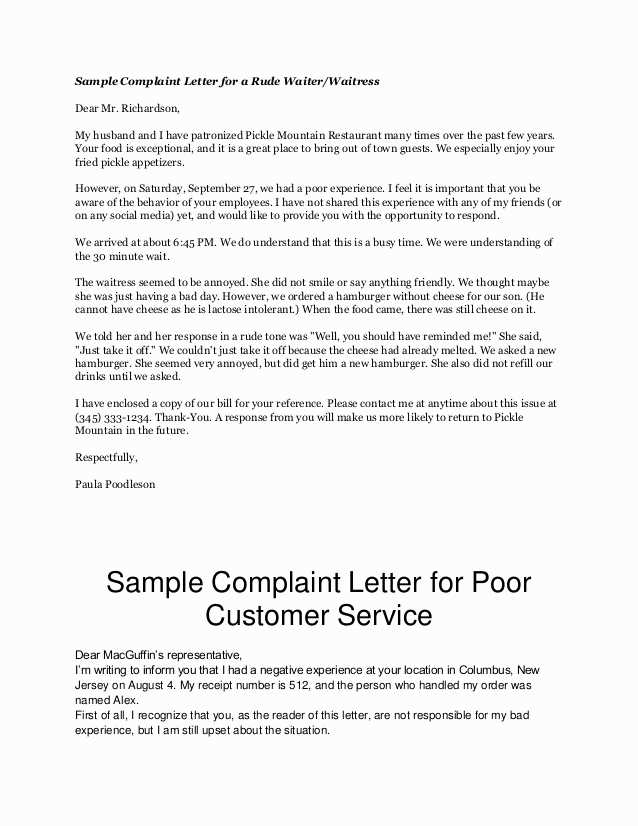
Addressing concerns from clients effectively is essential for maintaining a strong reputation and building lasting relationships. When issues arise, clear communication is crucial to resolve misunderstandings and ensure satisfaction. Crafting a well-structured reply can make a significant difference in turning a potentially negative situation into a positive outcome.
Offering a thoughtful and respectful reply shows that your business values feedback and is committed to providing excellent service. By acknowledging the issue, apologizing where necessary, and providing a clear course of action, you demonstrate professionalism and empathy. This not only helps retain loyal clients but also sets the foundation for future growth.
In this guide, you’ll discover the key elements of an effective reply that can be adapted for various situations. Whether you’re replying to a simple concern or a more complex issue, the principles of good communication remain the same: clarity, courtesy, and a focus on resolving the matter at hand.
Effective Ways to Handle Customer Complaints
Addressing dissatisfaction is an essential part of maintaining positive relationships and improving business practices. When an issue arises, it’s crucial to act quickly and professionally to prevent any damage to your reputation. A well-thought-out approach can turn a negative experience into an opportunity for growth.
Here are some effective strategies to manage concerns and restore confidence:
- Listen actively: Allow individuals to express their thoughts fully. Show that you value their opinion and are open to feedback.
- Acknowledge the issue: Recognize the problem and validate their feelings. This shows empathy and lets them know their concerns are taken seriously.
- Stay calm and composed: Remain professional and avoid becoming defensive. Keep emotions in check to ensure a constructive conversation.
- Apologize when necessary: Offer a sincere apology for any inconvenience or frustration caused, even if the situation wasn’t directly your fault.
- Offer a solution: Provide a practical way to resolve the issue. Clearly outline the steps that will be taken to prevent a recurrence.
- Follow up: Ensure the individual is satisfied with the solution and continue to monitor the situation to prevent future problems.
By following these steps, businesses can effectively address dissatisfaction, improve relationships, and create a stronger foundation for continued success.
Understanding the Importance of Response Letters
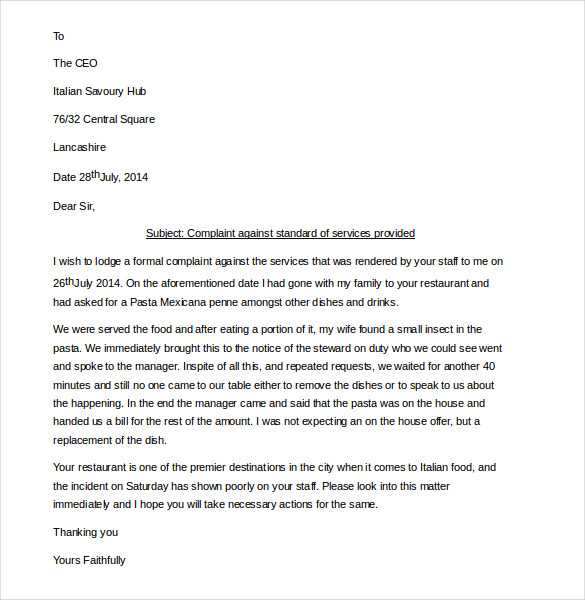
Communicating effectively when an issue arises is essential for maintaining positive relationships with those you serve. The way concerns are addressed can significantly influence the perception of your brand. A well-crafted reply serves as a direct reflection of your commitment to resolving issues and fostering trust.
Such written communication offers a chance to not only clarify misunderstandings but also to demonstrate your willingness to improve. Addressing concerns through thoughtful replies helps in preventing escalation and shows that the matter is being taken seriously. It also ensures that any dissatisfaction is met with a commitment to find a solution, making it easier to retain valuable connections.
Moreover, a clear and professional response can encourage transparency, boost credibility, and reinforce the reputation of your business as one that values feedback and strives for excellence.
Key Elements of a Complaint Response Letter
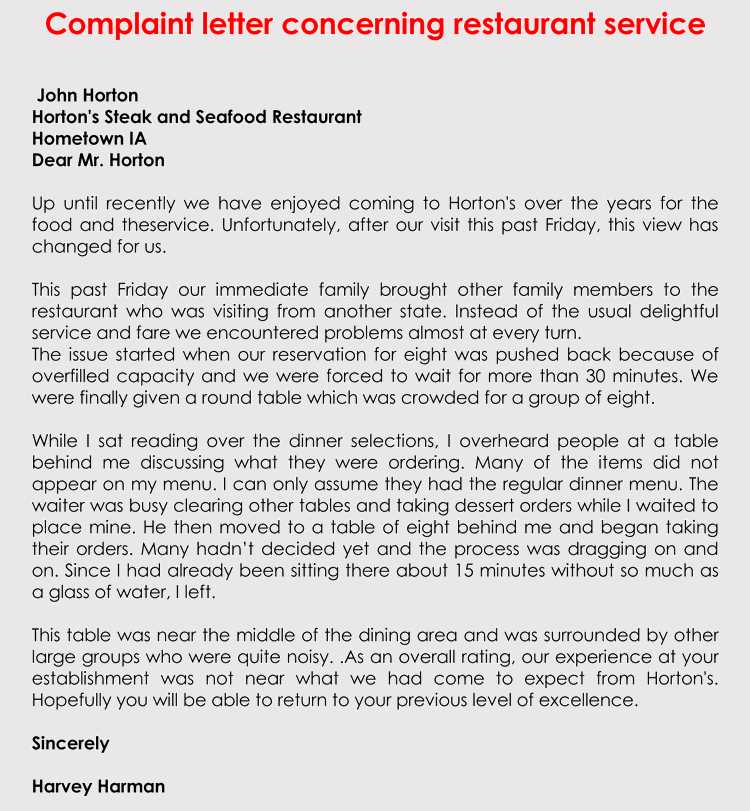
When addressing an issue, the structure and tone of your communication play a crucial role in resolving matters effectively. A well-organized reply ensures clarity and demonstrates professionalism. To achieve a positive outcome, certain components must be included to fully address the situation and reassure the individual involved.
The first critical element is a clear acknowledgment of the concern. Recognizing the issue upfront shows that you are attentive and that their feedback is valued. Following that, offering a sincere apology when necessary can go a long way in mending any negative feelings, even if the situation was beyond your control.
Next, it’s important to outline the steps that will be taken to resolve the issue. Providing a solution and giving clear instructions on how it will be handled assures the individual that actions are being taken to prevent future occurrences. Finally, a closing remark that encourages ongoing communication ensures that the individual feels heard and supported throughout the process.
How to Craft a Polite and Professional Tone
Maintaining a courteous and professional tone when addressing any form of dissatisfaction is essential to ensure that communication remains effective and respectful. A well-chosen tone helps to prevent further escalation and conveys that you are fully engaged in resolving the issue at hand. Whether the message is addressing a minor concern or a more significant matter, tone sets the stage for a constructive exchange.
The first key to a polite tone is showing empathy. Acknowledge the individual’s feelings and express understanding without being dismissive. Use phrases that convey concern, such as “I understand how frustrating this must have been” or “We appreciate you bringing this to our attention.” These small gestures go a long way in making the person feel heard and valued.
Furthermore, it’s important to remain calm and neutral, especially in the face of frustration. Avoid using language that could be interpreted as defensive or confrontational. Instead, focus on collaborative and solution-oriented phrases, emphasizing a desire to find a resolution. Offering assistance or further clarification can also foster a sense of support and care.
Steps to Personalize Your Response
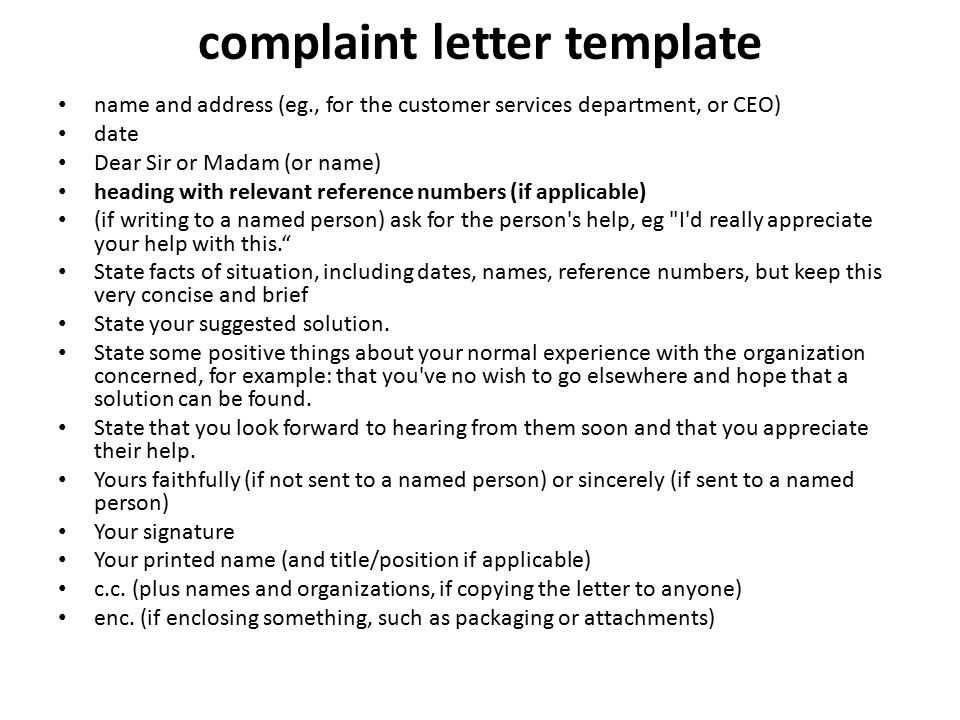
To create a meaningful connection and demonstrate genuine concern, it’s crucial to tailor your communication to the individual and their specific issue. Personalizing your reply not only addresses the situation more effectively but also shows that you value the person’s unique experience. By adding a personal touch, you can turn a generic message into one that resonates and fosters trust.
1. Address the Person by Name
Begin your reply by using the individual’s name, as it immediately creates a more personal and respectful tone. It shows that you are speaking directly to them, rather than offering a generic, one-size-fits-all solution. It also helps to build rapport and makes the communication feel more engaging and individualized.
2. Refer to Specific Details
Make sure to mention any specific information related to the issue they raised. Whether it’s a particular event, situation, or product, referencing the details shows that you are not simply sending a generic reply. This step highlights your attention to detail and reinforces that their feedback has been thoroughly considered.
Tips for Offering Solutions to Complaints
When issues arise, providing effective and thoughtful solutions is key to resolving the matter and maintaining a positive relationship. Offering a well-considered solution shows that you are not only committed to addressing the problem but also to ensuring satisfaction and preventing similar concerns in the future. A well-crafted solution is the foundation of a productive dialogue and can lead to greater customer loyalty.
1. Be Practical and Feasible
Ensure that the solution you offer is realistic and actionable. Propose a resolution that is achievable and addresses the core issue directly. Avoid promising something that cannot be delivered, as this can lead to further dissatisfaction. Being honest and transparent about what can be done shows that you value integrity and are working in good faith.
2. Offer Alternatives and Flexibility
Sometimes, the initial solution might not meet all expectations. In these cases, offering alternatives gives the individual a sense of control and choice. Presenting multiple options can demonstrate flexibility and a willingness to cater to their needs. By offering various solutions, you increase the likelihood of finding an outcome that satisfies both parties.
Remember, the goal is to resolve the issue in a way that benefits everyone involved, fostering goodwill and strengthening trust.
Common Mistakes to Avoid in Letters
When composing a message to address an issue, it’s easy to fall into common traps that can hinder effective communication. Mistakes in tone, content, or structure can weaken the message and potentially escalate the situation. Being mindful of these pitfalls is essential for crafting a response that is not only professional but also constructive.
1. Using a Defensive Tone
One of the most common errors is using a defensive or dismissive tone. Even if the situation seems unjustified, responding defensively can make matters worse. Instead, maintain a neutral and empathetic tone, focusing on solutions rather than placing blame.
2. Ignoring Specific Details
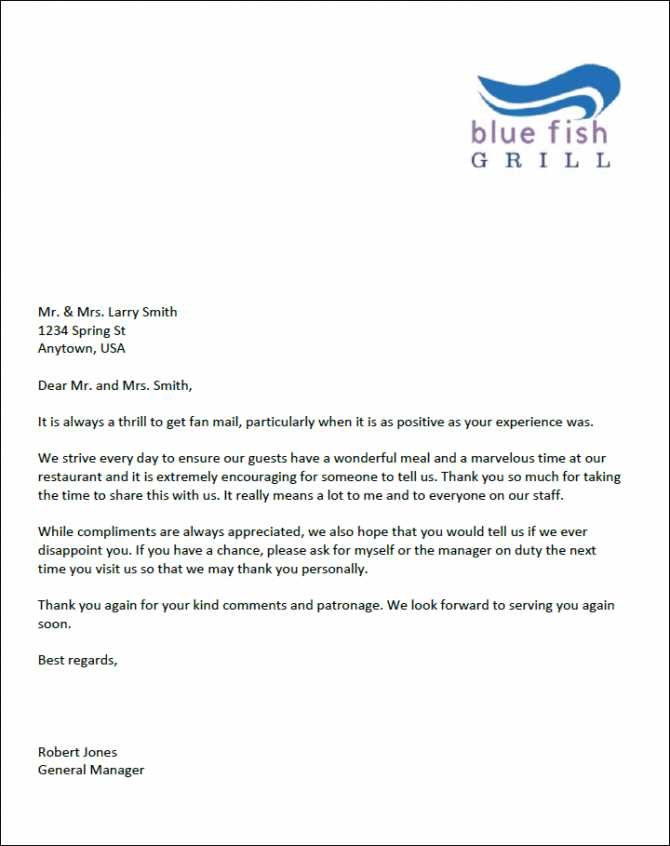
Failing to acknowledge the specific details of the issue can come across as inattentive or uninterested in the person’s concerns. It’s important to address the exact problem raised, as this demonstrates that you’ve taken the time to understand and evaluate their situation.
- Generic responses: These often feel impersonal and unhelpful. Tailor your reply to the situation.
- Over-promising: Avoid committing to actions or solutions you cannot guarantee.
- Being overly formal: While professionalism is crucial, an overly stiff tone can make the reply feel robotic.
Avoiding these errors will help you communicate more effectively and build a more positive interaction.
How to Ensure Customer Satisfaction
Maintaining a high level of satisfaction requires a proactive approach, focusing on understanding needs, addressing concerns, and offering effective solutions. The key is to make individuals feel valued and heard while ensuring that their experiences are consistently positive. A well-thought-out approach to problem-solving and follow-up communication is essential for lasting satisfaction.
1. Listen Actively and Respond Quickly
Timely responses show that you are committed to addressing concerns efficiently. Active listening ensures that the issue is fully understood, which is the first step in resolving it effectively. By acknowledging the situation and taking quick, thoughtful action, you demonstrate respect and dedication to resolving any challenges.
2. Offer Personalized Solutions
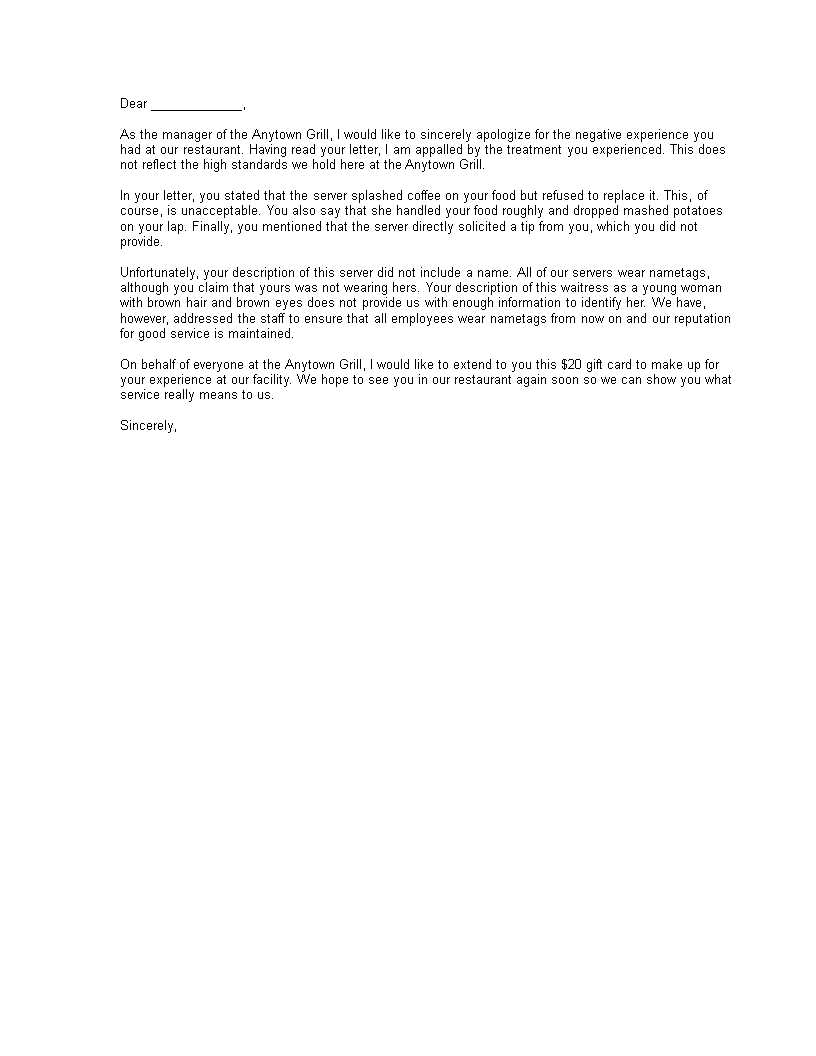
Providing tailored solutions makes the individual feel understood and valued. Generic responses often fail to resolve the issue effectively. Personalizing the approach ensures the solution is relevant and demonstrates your commitment to meeting their specific needs.
| Step | Action | Outcome |
|---|---|---|
| Listen Actively | Take the time to understand the issue thoroughly. | Shows attentiveness and makes the individual feel valued. |
| Respond Quickly | Provide a prompt and thoughtful reply. | Demonstrates commitment to resolving the matter efficiently. |
| Offer Tailored Solutions | Address the issue with a specific and relevant solution. | Fosters trust and ensures the individual feels heard. |
Ensuring satisfaction goes beyond resolving the issue at hand; it’s about showing care, providing thoughtful solutions, and maintaining a strong relationship over time.